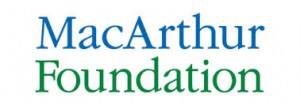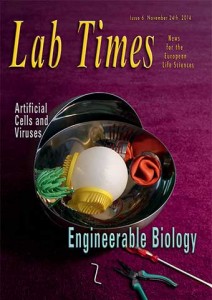 As they did last year, our friends at The Scientist asked us to contribute our list of top 10 retractions in 2014. Here’s our list, from Anversa to Zaman. Continue reading The top 10 retractions of 2014
As they did last year, our friends at The Scientist asked us to contribute our list of top 10 retractions in 2014. Here’s our list, from Anversa to Zaman. Continue reading The top 10 retractions of 2014
Category: RW announcements
Former postdoc threatens Retraction Watch with lawsuit over vague defamation claims

In April 2012, we wrote about a case of disputed authorship and misused data involving one Varun Kesherwani, a former postdoc at the University of Nebraska.
As we reported then, Kesherwani was first author of a paper in Cytokine. The second author, Ajit Sodhi, of Banaras Hindu University, claimed to have had no knowledge of the article and had not given Kesherwani permission to use the results. Thus, the retraction.
Since then, we have received numerous messages from Kesherwani objecting to our post — he claims it has hurt his employment prospects — and demanding that we take it down. At one point he even suggested in an email that we pay him to go away: Continue reading Former postdoc threatens Retraction Watch with lawsuit over vague defamation claims
Retraction Watch is growing, thanks to a $400,000 grant from the MacArthur Foundation
 Dear Retraction Watch readers, we have some exciting news to share.
Dear Retraction Watch readers, we have some exciting news to share.
After more than four years, 2,000 posts, and incredible responses from the scientific community, we are thrilled to announce that The Center For Scientific Integrity, a not-for-profit corporation we’ve established, has been awarded a $400,000 grant from the MacArthur Foundation to expand the work of Retraction Watch.
The goal of the grant — $200,000 per year for two years — is to create a comprehensive and freely available database of retractions, something that doesn’t now exist, as we and others have noted. That, we wrote in our proposal, is
a gap that deprives scholarly publishing of a critical mechanism for self-correction.
While we’re able to cover somewhere around two-thirds of new retractions as they appear, we’ll need more resources to be comprehensive. Here’s more from our proposal: Continue reading Retraction Watch is growing, thanks to a $400,000 grant from the MacArthur Foundation
The Peer Review Scam: How authors are reviewing their own papers
 Yesterday, we reported on the discovery by BioMed Central that there were about 50 papers in their editorial system whose authors had recommended fake peer reviewers. Those “reviewers” had submitted reviews of a number of manuscripts, and five of the papers had been published. (BMC posted a blog examining the case this morning.)
Yesterday, we reported on the discovery by BioMed Central that there were about 50 papers in their editorial system whose authors had recommended fake peer reviewers. Those “reviewers” had submitted reviews of a number of manuscripts, and five of the papers had been published. (BMC posted a blog examining the case this morning.)
For some Retraction Watch readers, the elements of the story may have seemed familiar. Fake reviews — often involving self-peer review — have been the basis for a growing number of retractions.
As it happens, we’ve been working for a few months on a feature for the news section of Nature on the larger phenomenon. In the piece, out today and titled “The Peer Review Scam,” we write: Continue reading The Peer Review Scam: How authors are reviewing their own papers
Are lawyers ruining science?
 Regular Retraction Watch readers may have noticed that legal issues seem to be popping up more often in the cases we cover. There has been a lawsuit filed against PubPeer commenters, for example, and Nature last month blamed lawyers for delayed and opaque retraction notices.
Regular Retraction Watch readers may have noticed that legal issues seem to be popping up more often in the cases we cover. There has been a lawsuit filed against PubPeer commenters, for example, and Nature last month blamed lawyers for delayed and opaque retraction notices.
It was those cases and others that prompted us to write our most recent column for Lab Times with a title mirrored in the headline of this post. As we note in our column, there are a lot of great lawyers out there, some of whom — for example, those at WordPress — have helped us
fight the good fight. We also believe strongly in the ability of prosecutors to punish – and, ideally, deter – scientific misconduct, particularly in cases involving fraud using taxpayer dollars.
Still, as we write: Continue reading Are lawyers ruining science?
“Editors are pleased to receive death threats on the third Thursday of the month:” A new journal launches
 There’s a new journal in town.
There’s a new journal in town.
Inference’s first issue includes a lengthy review of a laboratory by a tennis instructor, a set of caricatures, and an exchange of emails from 1996 that is “perhaps, less remarkable for what it says than for the fact that it took place at all.”
In short, its editors — who “would prefer to remain anonymous” — seem to share a sense of humor with the editors of the Journal of Universal Rejection or the Proceedings of the Natural Institute of Science: Continue reading “Editors are pleased to receive death threats on the third Thursday of the month:” A new journal launches
Is it time for a retraction penalty?
 The title of this post is the headline of our most recent column in LabTimes, which begins:
The title of this post is the headline of our most recent column in LabTimes, which begins:
As we write this in mid-August, Nature has already retracted seven papers in 2014. That’s not yet a record – for that, you’d have to go back to 2003’s ten retractions, in the midst of the Jan Hendrik Schön fiasco – but if you add up all of the citations to those seven papers, the figure is in excess of 500.
That’s an average of more than 70 citations per paper. What effect would removing those citations from calculations of Nature’s impact factor – currently 42 – have?
Science would lose 197 citations based on this year’s two retractions. And Cell would lose 315 citations to two now-retracted papers.
In other words, what if journals were penalised for retractions, putting their money where their mouth is when they talk about how good their peer review is? Clearly, if a paper is retracted, no matter what excuses journals make, peer review didn’t work as well as it could have.
We explore what this might mean for top journals. But there are some nuances here. We wouldn’t want to further discourage retractions of papers that deserved it. One solution: Continue reading Is it time for a retraction penalty?
What should an ideal retraction notice look like? We (and COPE) want your input
 Last week, we announced a new partnership with PRE (Peer Review Evaluation) “to improve access to information about retraction policies.” The first step, we and PRE said, was that Retraction Watch would create guidelines for retraction notices, to which PRE’s flagship product, PRE-val, would link.
Last week, we announced a new partnership with PRE (Peer Review Evaluation) “to improve access to information about retraction policies.” The first step, we and PRE said, was that Retraction Watch would create guidelines for retraction notices, to which PRE’s flagship product, PRE-val, would link.
Well, it turns out that great minds think alike, or along similar lines, anyway. Today we learned that next week, the Committee on Publication Ethics (COPE) will be discussing a standard retraction form proposed by friend of Retraction Watch Hervé Maisonneuve, who has published several papers on retractions. According to a writeup: Continue reading What should an ideal retraction notice look like? We (and COPE) want your input
A new partner for Retraction Watch: PRE (Peer Review Evaluation)
 We’re very pleased to announce that we’ve partnered with PRE (Peer Review Evaluation) to improve access to information about retraction policies.
We’re very pleased to announce that we’ve partnered with PRE (Peer Review Evaluation) to improve access to information about retraction policies.
In the coming months, we’ll be publishing guidelines for what we think should be included in retraction notices, and on how those notices should be publicized. As a release describing the new partnership notes: Continue reading A new partner for Retraction Watch: PRE (Peer Review Evaluation)
White House takes notice of reproducibility in science, and wants your opinion
 The White House’s Office of Science and Technology Policy (OSTP) is taking a look at innovation and scientific research, and issues of reproducibility have made it onto its radar.
The White House’s Office of Science and Technology Policy (OSTP) is taking a look at innovation and scientific research, and issues of reproducibility have made it onto its radar.
Here’s the description of the project from the Federal Register: Continue reading White House takes notice of reproducibility in science, and wants your opinion